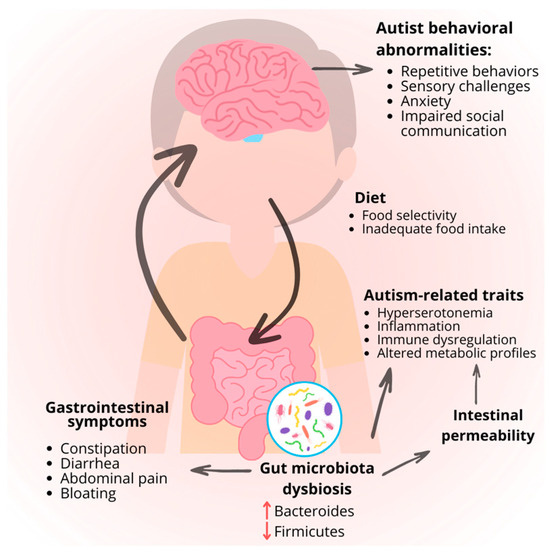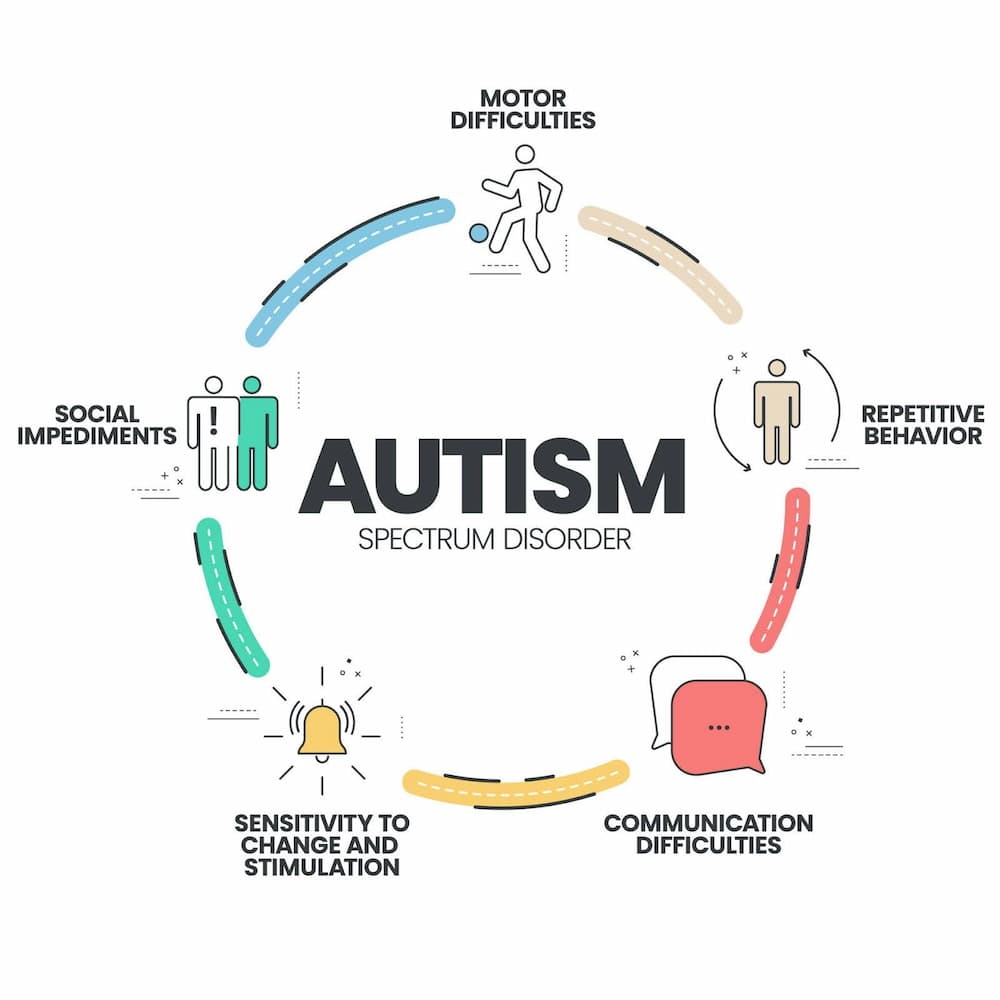When you should consider your family needs Autism Behavioral Therapy
When you should consider your family needs Autism Behavioral Therapy
Blog Article
Comprehending the Influence of Behavioral Autism on Life and Social Interactions
You could not realize how deeply behavioral autism impacts every day life and social interactions. Individuals on the spectrum usually browse a globe loaded with communication difficulties and sensory overload. These challenges can bring about irritation and seclusion, affecting their partnerships and total well-being. Comprehending these nuances is vital for promoting supportive environments. What strategies can we implement to develop even more inclusive spaces and purposeful links? The responses could shock you.
Specifying Behavioral Autism and Its Characteristics
Behavior autism, commonly referred to as autism range condition (ASD), includes a variety of problems defined by challenges in social interaction, interaction, and repeated behaviors. You could observe that individuals with ASD often battle to translate social cues, which can bring about misconceptions in discussions. They may find it difficult to develop eye contact or participate in tiny talk, making social circumstances really feel overwhelming.
Communication problems can materialize in different means, from postponed speech development to a preference for using fewer words. By recognizing these qualities, you can cultivate a setting that advertises approval and encourages effective communication, helping individuals with autism prosper in their day-to-day interactions.
The Spectrum of Autism: Comprehending Variability in Habits
Autism range problem (ASD) isn't a one-size-fits-all medical diagnosis; it differs extensively amongst people. You could see that some individuals with ASD show light symptoms, while others might encounter more significant challenges. This irregularity can show up in habits, passions, and sensory level of sensitivities. You might encounter people that are very spoken and engage easily in conversations, while others might prefer solitary tasks or connect non-verbally.
Furthermore, the means individuals with ASD reply to sensory input can differ significantly; some might be bewildered by intense lights or loud sounds, whereas others flourish in stimulating settings. The spectrum additionally includes distinctions in social communications; some individuals might have a hard time to interpret social hints, while others navigate social setups with family member ease. Recognizing this irregularity is crucial, as it aids you appreciate each individual's one-of-a-kind experience and tailor support to their details requirements, cultivating a much more inclusive environment for everybody.
Communication Obstacles Encountered by Individuals With Autism
When you engage with individuals on the autism spectrum, you may observe their distinct interaction challenges. They usually deal with problems with both spoken and nonverbal hints, which can influence their social interactions. Understanding these barriers is crucial for promoting far better connections and support.

Verbal Communication Problems
Numerous individuals on the autism range experience spoken communication difficulties that can considerably influence their everyday interactions. Your speed, volume, or tone might not straighten with social assumptions, triggering others to misinterpret your intentions. Identifying these difficulties can help you and your assistance network establish strategies to boost communication and foster far better connections with others in your daily life.
Nonverbal Interaction Barriers
Verbal communication isn't the only difficulty people on the autism range face; nonverbal interaction barriers can be just as considerable. These difficulties can lead to misconceptions or misinterpretations of social hints, making interactions feel overwhelming or confusing. By resolving nonverbal interaction, you can locate techniques to enhance your social experiences and improve your general high quality of life.
Social Communication Influences
Social communications can often feel overwhelming due to the distinct communication difficulties faced by individuals with autism. You might have problem with translating social hints, making it difficult to comprehend sarcasm or body language. This can result in misconceptions or awkward moments in conversations. Furthermore, starting and maintaining conversations may really feel tough, creating anxiousness in social circumstances. You may like structured environments, making spontaneous interactions awkward. It's also common to experience trouble in taking part in little talk, which can hinder forming brand-new friendships. Recognizing these challenges can aid you discover techniques to improve interaction, such as exercising social abilities in risk-free settings or making use of visual help - Aba Therapist. Recognizing your demands enables you to browse social communications with greater self-confidence and ease.
Social Interaction and Partnership Structure in Autism
While building partnerships can be challenging for people with autism, understanding their distinct viewpoints and communication styles can cultivate meaningful connections. You may discover that lots of individuals on the range favor straight interaction and may battle with social signs or little talk. By being simple in your communications, click here you can aid produce an environment where they feel comfy.
Put in the time to observe and listen how they express themselves. This insight can guide you in guiding discussions better. Taking part in shared rate of interests can also work as a bridge to deeper links. Whether it's a pastime, a favorite program, or a shared interest, these common strings can open doors to friendship.
Day-to-day Live Routine: Navigating Challenges and Techniques
Maneuvering day-to-day life routines can be specifically challenging for individuals with autism, particularly when unexpected adjustments take place. To navigate these difficulties, consider applying aesthetic routines or checklists.
Developing a routine that consists of sensory breaks can also be advantageous. This aids create an understanding atmosphere.
Last but not least, technique mindfulness methods to take care of anxiety and anxiousness. Simple breathing workouts or basing methods can make a considerable difference. By integrating these techniques, you can improve your daily routine and decrease interruptions, making life really feel extra workable.
Strengths and Capacities of People on the Autism Range
Recognizing everyday life routines is simply one facet of the autism experience. Lots of people on the autism range have remarkable toughness and abilities that establish them apart.
Additionally, your memory abilities typically radiate, specifically in locations of passion. Autism Therapist. This propensity for preserving details can make you a useful source in fields like art, scientific research, or modern technology. You may additionally display solid aesthetic reasoning, allowing you to imagine intricate concepts and address troubles artistically
In addition, your unique perspective on the globe can foster compassion and understanding in others, enhancing social interactions. Welcoming these toughness not only enhances your confidence yet additionally aids others appreciate the varied skills you give the table.
Producing Comprehensive Environments for Individuals With Autism
Developing comprehensive atmospheres for people with autism starts with designing sensory-friendly areas that accommodate their one-of-a-kind requirements. You can additionally foster possibilities for social communication, aiding to develop friendships and connections. By making these adjustments, you'll add to an extra welcoming ambience for every person.
Designing Sensory-Friendly Spaces
While making sensory-friendly rooms, it's vital to reflect on the one-of-a-kind needs of individuals with autism. Integrate peaceful zones where people can charge and pull away when bewildered. Include aesthetic timetables or clear signs to aid individuals browse the space with confidence.
Promoting Social Communication Opportunities
Designing sensory-friendly rooms not only addresses individual convenience yet also establishes the phase for significant social interactions amongst people with autism. To advertise these interactions, develop inclusive environments that welcome participation. Arrange structured tasks, like art courses or team video games, that encourage collaboration without frustrating sensory input. Usage visual aids and clear interaction to aid every person engage easily. Urge peer mentoring, coupling people with autism with supportive peers that can guide them via social circumstances. Additionally, consider holding normal neighborhood occasions that celebrate neurodiversity, promoting approval and understanding amongst all participants. By applying these methods, you can enhance social opportunities, helping individuals with autism build friendships and strengthen their social skills in a risk-free, inviting environment.

Regularly Asked Questions
Just How Can Buddies Assistance Someone With Behavioral Autism?
You can support a close friend with behavior autism by holding your horses, listening actively, and respecting their limits. Involve in activities they take pleasure in, connect openly, and create a comfortable atmosphere where they feel valued and understood.
What Resources Are Available for Moms And Dads of Children With Autism?
You can explore numerous sources for parents of children with autism, consisting of support teams, instructional web sites, and regional social work. Linking with other moms and dads can likewise offer important understandings and shared experiences to assist navigate challenges.
Can Behavioral Autism Adjustment With Time?

Yes, behavior autism can change gradually. You might see shifts in interaction, social skills, and actions as your kid expands. Early intervention and assistance commonly play vital duties in these developmental adjustments.
How Do Sensory Level Of Sensitivities Impact Day-to-day Live?
Sensory sensitivities can make day-to-day experiences overwhelming. You may battle with loud noises or intense lights, bring about tension or evasion. Locating environments that suit your demands can considerably improve your convenience and general life.
What Are Common Misconceptions Regarding Behavioral Autism?
You may believe behavioral autism just affects communication skills, however it's even more complex. Numerous think people lack empathy or intelligence, which isn't true. Understanding these misunderstandings assists foster approval and assistance for those on the range.
Behavioral autism, typically referred to as autism spectrum problem (ASD), includes a variety of problems characterized by obstacles in social communication, interaction, and repeated habits.Social communications can usually really feel overwhelming due to the distinct communication challenges faced by individuals with autism.Creating sensory-friendly rooms not just addresses private comfort but also establishes the phase for purposeful social communications among people with autism. Motivate peer mentoring, combining individuals with autism with supportive peers who can direct them through social circumstances. By implementing these approaches, you can enhance social possibilities, assisting individuals with autism develop friendships and enhance their social abilities in a safe, welcoming environment.
Report this page